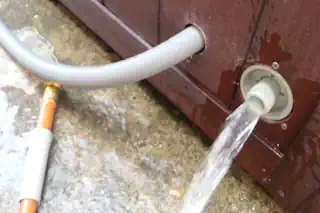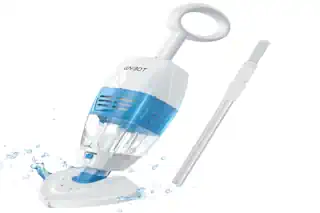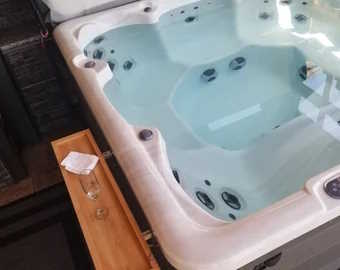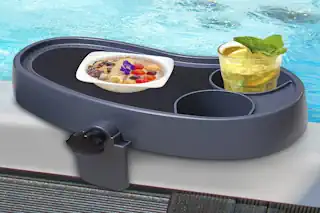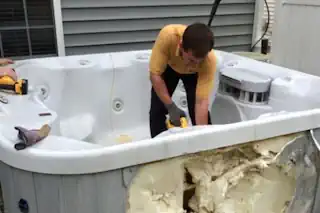Finding Your Home’s Hottest Spot: The Ultimate Guide to Hot Tub Placement
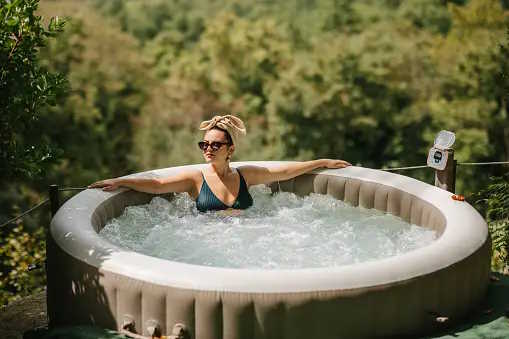
The soothing hum of warm, bubbling water, the gentle cascade of warmth over your skin, and the satisfaction of unwinding in your very own hot tub – a vision that dances in the dreams of many homeowners. With the increasing appeal of creating personal sanctuaries within our homes, hot tubs have made their way from luxury hotel suites to becoming a staple in modern residential spaces. But here’s the splash of reality: placing a hot tub is more than a simple act of dropping it where the backyard grass is greenest. No, the placement of a hot tub is a well-considered decision, one that enhances the harmony of your home and your life.
Before you take the plunge, allow me to guide you through the nuances of hot tub accommodation in your abode. From the structural requirements to the serenity of the soaking experience, it’s time to uncover the best spots for your own hydrotherapy retreat.
The Placement Quest: More Than Just a Decision
Upon deciding to bring a hot tub into your life, the first quest is the placement. This quest isn’t just about where to put a large, luxurious vat of water; it’s an exploration of what you value in relaxation. Do you yearn for the fresh air and open skies, or crave the privacy of indoors? Are you seeking a functional fitness recovery or a social setting that’s warm – both in water temperature and conversation? Is a portable option for a quick relaxing soak just what seeking? Here’s how you can evaluate your home’s candidate locales for the perfect hot tub integration:
Space and Dimensions
Begin by measuring the space available for your hot tub. Remember to account for the surrounding walkway space necessary for cleaning and maintenance. Consider the height of any doors you might need to pass through and the integrity of your flooring if installing indoors. Most hot tubs will fit through standard doors but getting them downstairs can be very difficult.
Accessibility and Privacy
How easy is it to get to and from the potential hot tub locations? Think about if you want children to have easy access or if you prefer a more secluded setting, particularly if you have neighbors in close proximity.
Structural Support and Electrical Requirements
A filled hot tub is heavy, and while the water is a necessary part of the experience, you certainly don’t want it leaking through your ceiling. Ensure the chosen area can handle the weight and any potential water force. Additionally, hot tubs require a dedicated electrical supply, which may influence your location decision.
Indoor Oasis or Outdoor Escape?
The battle of the best localization for a hot tub can often pit the indoors against the outdoor space. Which setting wins in various categories may determine your favorite spot.

The Great Outdoors
Pros
Scenic beauty and fresh air.
Typically more spacious surroundings.
Natural light that can enhance ambience.
Easier to expand space to include extra seating for friends and guests.
Large hot tubs and/or swim spa are more easily installed outside.
Cons
Exposure to the elements and temperature variations.
Potential privacy and accessibility concerns.
Additional safety considerations, especially in colder climates with slippery surfaces.
Keeping debris and other yard stuff out of your spas
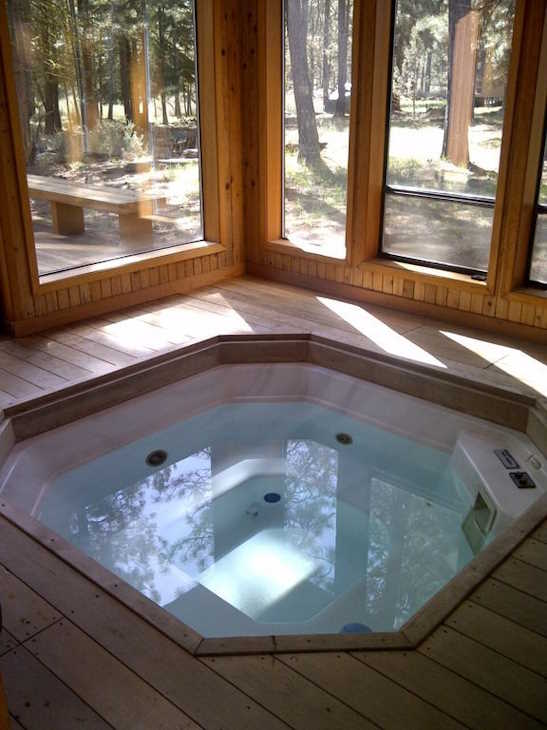
The Indoor Advantage
Pros
Year-round usage, regardless of weather conditions.
Enhanced privacy and insulation against noise.
Integration with existing decor for a seamless look and feel.
Sit and soak inside the house is more comfortable
Cons
Potential for increased humidity and ventilation needs. Adequate ventilation is a must.
Structural and flooring concerns, as well as limited space in many homes.
Lack of natural light, which might diminish the overall experience for some.
Larger pools like swim spas are hard to get into the house.
Delivery access may also prevent installation in your house.
Potential Hot Spots in Your Home
It’s placement precision time. Here are the most plausible locations within your home and outdoor spaces that could welcome a soothing hot tub:
Bathing Alcove
Master bathroom remodels often lead to the inclusion of a hot tub in a dedicated bathing alcove. This set up provides an intimate spa experience, but it does demand space and planning to accommodate a spas size and weight.
The Sunroom Sanctuary
For those who love natural light and the feeling of being outdoors even when they’re not, the sunroom can be a sanctuary. It’s a space that marries indoor comfort with an outdoor feel, perfect for year-round soaking. Sunshine in, UV rays out.
Basements and Bonus Rooms
Converting a basement or bonus room into a spa oasis can be an excellent use of space, especially if you’re lacking room on your main levels. Be mindful of the available square footage, as these spaces can be relatively smaller.
Deck and Patios
Built with the idea of enjoyment, decks and patios can be adorned with a hot tub to turn outdoor spaces into a full-scale leisure retreat. Make sure your deck can handle the added weight and that your patio is leveled properly.
Surrounding Comforts: Enhancing the Hot Tub Space
A hot tub isn’t just about the water. It’s about the experience. Create a cocoon of comfort around your hot tub with these ideas:
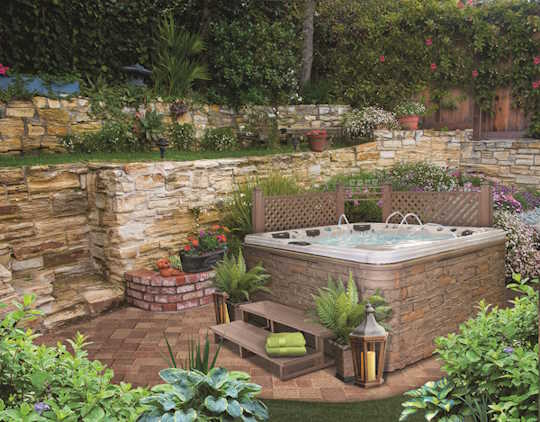
Landscaping for Privacy
Strategically planted shrubs or trees can offer a natural screen, providing seclusion without closing off your space. Consider the weather-resistant varieties that cope well with both cold and heat.
Illuminated Ambiance
The right lighting can transform a plunge into the hot tub into a full-sensory experience. Invest in gentle, underwater LED lights for a calming effect, and consider pathways or planters for an added aesthetic. Careful thought and planning with lighting can make a major difference in the spas experience.
Protecting the Peace
If you’re installing your hot tub in a more open setting, such as on a deck, consider a gazebo or a pergola to shield from the sun and prying eyes without sacrificing the open-air feel.
Installation Insights: From Safety to Serenity
To ensure your hot tub experience is enjoyable for all the right reasons, you’ll need to get the installation spot on.
The Professional Presence
A DIY hot tub installation is rarely as satisfying or successful as one completed by professionals. They’ll know how to handle the heavy lifting, both literally and logistically. They also understand many important considerations concerning power, heating and other concerns in the available space you have selected.
Safety First, Second, and Always
From anti-slip flooring around the area to proper lighting for nighttime use, safety should inform every decision around your hot tub placement. We have rubber mats and carpets around our home spa and in our opinion they are essential parts of our safety plan.
The Maintenance Mentality
Think about how easy it will be to maintain and service your hot tub when choosing its location. Accessibility for repairs and regular maintenance should be a priority. Hot tubs need to be drained from time to time so make sure you have a plan for how you will drain from your chosen location. A submersible pump can help with both drain and fill efforts.
Location Locked In: Final Thoughts
The right place for a hot tub in your home is as personal a decision as the right tub itself. It’s about balancing practicality and luxury, comfort and convenience. And now, armed with insights and ideas, it’s time for you to find your home’s hottest spot and immerse yourself in the bliss of your very own hot tub.
Encourage your creativity and share the adventure with your family. Turn the chore of finding the perfect place into a joyous home improvement project. After all, the quest for the perfect hot tub placement isn’t just about laying pipes and electrical conduits; it’s about weaving water into the very fabric of your home.
Hydrotherapy jets, back jets, feet jets, leg jets, neck jets and other fun feathers are all apart of the health benefits a spa will bring to your house. The combination is hard to beat. Purchase a new hot tub and discover all of these benefits and so much more.
Wherever you choose to install, remember to bask in the satisfaction of making an investment in both your property and your well-being. And if this article was helpful, please share your hot tub placement story with us. Your experiences are the water that fills our community hot tub, and we’re eager to hear the ripple effect it’s made in your life. Cheers to the warm waters ahead!
Frequently Asked Questions (FAQs)
How much does it typically cost to install a hot tub?
The cost of installing a hot tub can vary widely depending on the model, the complexity of the installation, and whether indoor or outdoor. Generally, you might expect to spend anywhere from $3,000 to $16,000, inclusive of the unit and installation fees.
Can I install an outdoor hot tub on my existing deck?
Yes, many decks can accommodate a hot tub, but it’s crucial to first assess whether your deck can support the significant weight of a hot tub filled with water and occupants. Consulting with a structural engineer or a professional installer is highly recommended. Having a solid base is a must. If you have any doubts, consider a ground installation instead.
How do I maintain my hot tub?
Regular maintenance includes checking and balancing the water chemistry, changing the water, cleaning the filter, and inspecting the equipment. It’s also wise to have a professional check-up annually to ensure everything is in top working condition.
Are there energy-efficient hot tubs?
Absolutely! Many modern hot tubs are designed with energy efficiency in mind, featuring better insulation, high-quality covers, and more efficient heating systems. These features help to reduce the overall running costs.
Is a permit required to install a hot tub?
In many cases, yes, especially for outdoor installations. Local building codes and regulations may require a permit and adherence to specific safety standards. It’s important to check with your local municipality or building department before beginning your installation project.
Can inflatable hot tubs be used year-round?
While inflatable hot tubs offer flexibility and convenience, their suitability for year-round use depends on your local climate. In regions with mild winters, you may indeed enjoy your inflatable hot tub throughout the year. However, in areas with harsh winters, it’s advisable to pack up and store your tub to prevent damage from freezing temperatures. Always follow the manufacturer’s guidelines regarding temperature limits and maintenance recommendations to ensure the longevity of your inflatable hot tub.
How long does it take to install a hot tub?
The installation time can vary significantly based on location, type of hot tub, and site preparation needs. In general, once the site is prepared, the actual hot tub installation can often be completed in a single day.
Can my hot tub be used in winter?
Most definitely! Many people enjoy using their hot tubs year-round, especially in colder climates. Ensure your hot tub is designed for winter use, focusing on models with strong insulation and efficient heating systems to maintain a comfortable water temperature even in freezing conditions. Having wood or some similar material around the spa are very nice features.
By keeping these FAQs in mind, you’ll be better equipped to make informed decisions about adding a hot tub to your home, ensuring endless hours of enjoyment and relaxation.
